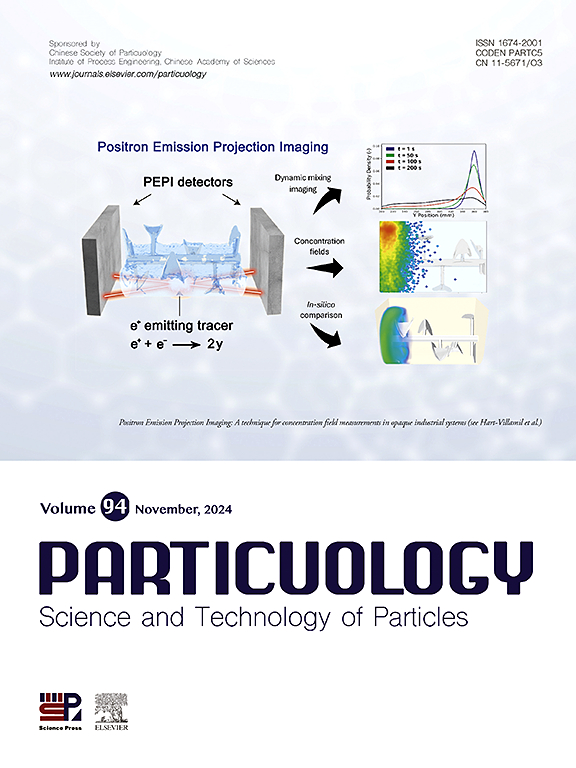Tabulation as a method to accelerate intraparticle models in DEM: Thermal conduction as an example
IF 4.3
2区 材料科学
Q2 ENGINEERING, CHEMICAL
引用次数: 0
Abstract
Intraparticle models of thermal processes are essential in the Discrete Element Method (DEM) when particles are thermally thick. Accurately solving the intraparticle conservation equations using the finite volume method requires sufficient spatial and temporal resolution, increasing simulation cost. This short communication proposes to replace the finite volume method (FVM) by a novel tabulated model that reduces the computational effort without compromising accuracy. The look-up database is generated from a set of single-particle simulations under different boundary conditions using the FVM. To assess the capability of the tabulated model to reproduce the results of the finite volume method, another single particle case with periodic functions for the fluid temperature is simulated. Results showed that tabulation provides accurate predictions while reducing computational cost by a factor of 3–10.

制表作为加速DEM中粒子内模型的方法:以热传导为例
当颗粒热厚时,热过程的粒内模型在离散元法(DEM)中是必不可少的。用有限体积法精确求解粒子内守恒方程需要足够的空间和时间分辨率,增加了模拟成本。本文提出用一种新的表格模型代替有限体积法(FVM),该模型在不影响精度的情况下减少了计算量。利用FVM对不同边界条件下的一组单粒子模拟生成查询数据库。为了评估表列模型再现有限体积法结果的能力,模拟了另一种具有流体温度周期函数的单粒子情况。结果表明,制表提供了准确的预测,同时将计算成本降低了3-10倍。
本文章由计算机程序翻译,如有差异,请以英文原文为准。
求助全文
约1分钟内获得全文
求助全文
来源期刊

Particuology
工程技术-材料科学:综合
CiteScore
6.70
自引率
2.90%
发文量
1730
审稿时长
32 days
期刊介绍:
The word ‘particuology’ was coined to parallel the discipline for the science and technology of particles.
Particuology is an interdisciplinary journal that publishes frontier research articles and critical reviews on the discovery, formulation and engineering of particulate materials, processes and systems. It especially welcomes contributions utilising advanced theoretical, modelling and measurement methods to enable the discovery and creation of new particulate materials, and the manufacturing of functional particulate-based products, such as sensors.
Papers are handled by Thematic Editors who oversee contributions from specific subject fields. These fields are classified into: Particle Synthesis and Modification; Particle Characterization and Measurement; Granular Systems and Bulk Solids Technology; Fluidization and Particle-Fluid Systems; Aerosols; and Applications of Particle Technology.
Key topics concerning the creation and processing of particulates include:
-Modelling and simulation of particle formation, collective behaviour of particles and systems for particle production over a broad spectrum of length scales
-Mining of experimental data for particle synthesis and surface properties to facilitate the creation of new materials and processes
-Particle design and preparation including controlled response and sensing functionalities in formation, delivery systems and biological systems, etc.
-Experimental and computational methods for visualization and analysis of particulate system.
These topics are broadly relevant to the production of materials, pharmaceuticals and food, and to the conversion of energy resources to fuels and protection of the environment.
 求助内容:
求助内容: 应助结果提醒方式:
应助结果提醒方式:


